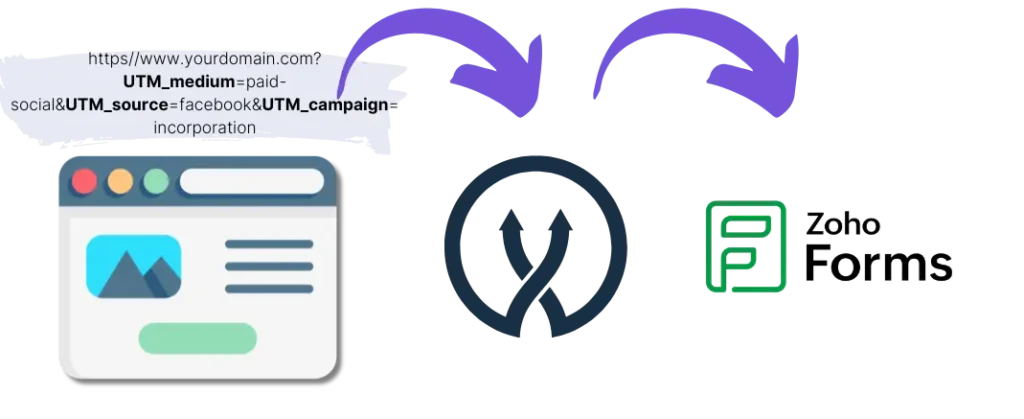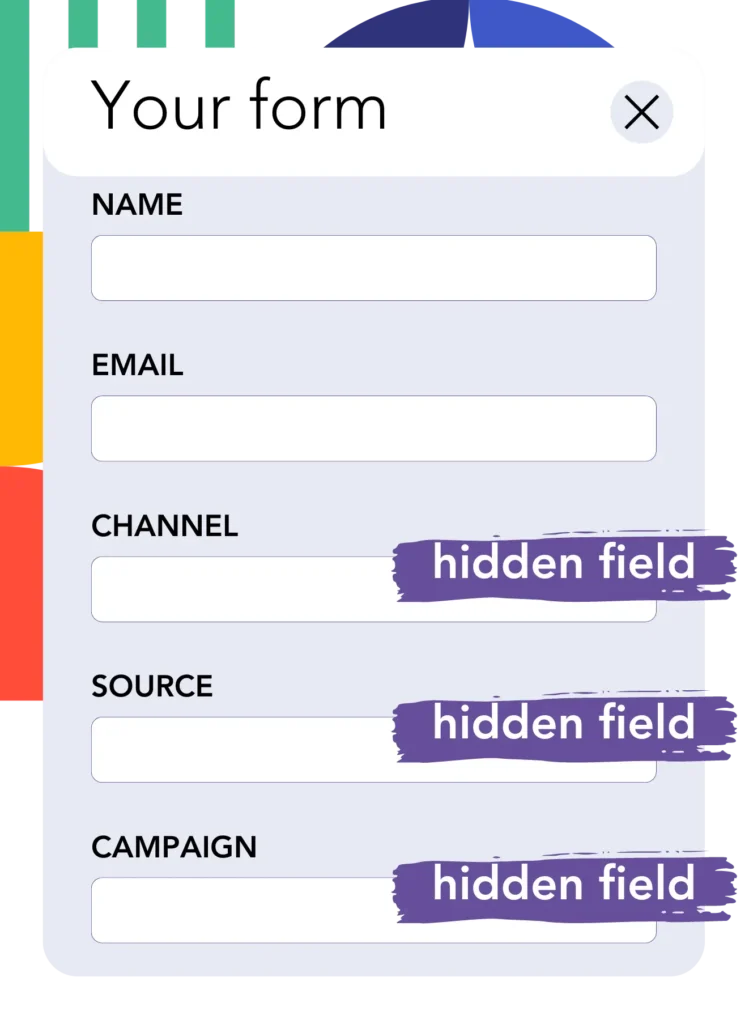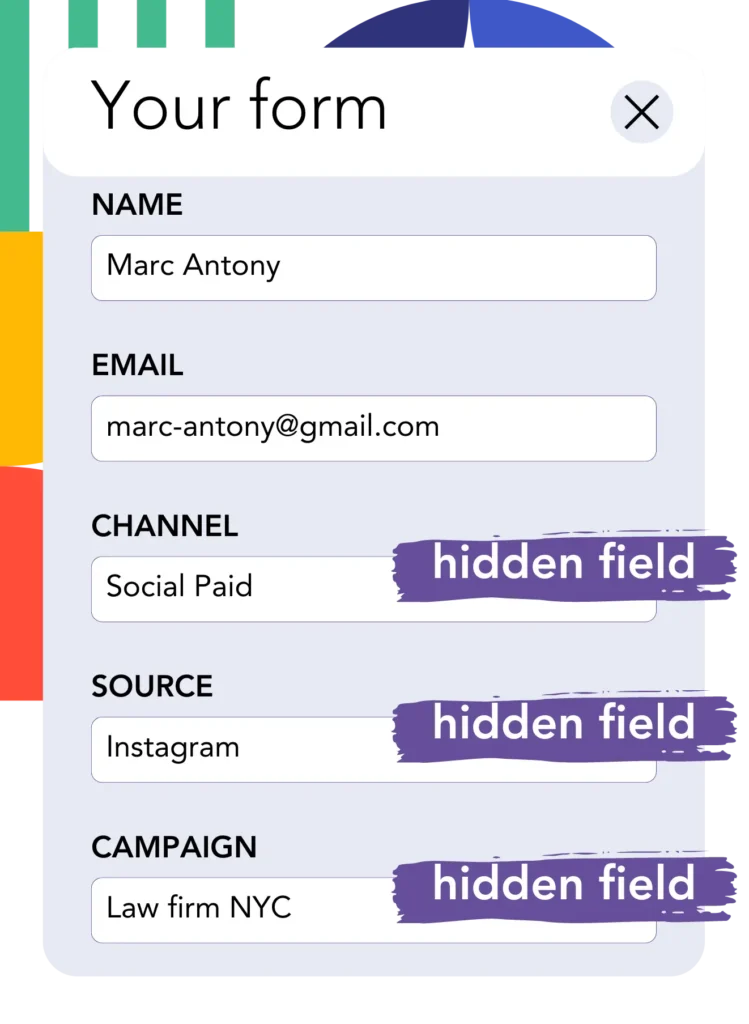Adding UTM tracking to Zoho Forms can be challenging, especially for those without coding skills.
What if there was a way to easily capture UTM parameters in Zoho Forms without needing any code?
Time to meet Leadsources.io!
Leadsources provides an easy way to track your lead sources by integrating UTM parameters with Zoho Forms.

When a visitor clicks on your marketing campaign, Leadsources captures the UTM parameters from your URL.
Leadsources then automatically inserts the UTM parameters into the hidden fields of your Zoho Forms.
You can view your UTM parameters alongside the lead’s information on Zoho Forms lead submission page.
Follow this easy guide to learn how to implement UTM tracking in Zoho Forms with Leadsources in just 10 minutes.
Implement Zoho Forms UTM tracking in 4 easy steps:
Step 1: Add Leadsources to your website’s head tag

Sign up at Leadsources.io and enjoy a 14-day free trial.
Add the Leadsources code to your website’s head tag. No coding or developers needed.
Follow our step-by-step guide.
Step 2: Add UTM parameters to your campaigns

Include the UTM parameters you want to track in all your campaigns (PPC, email, social media, etc.).
Leadsources works with the following UTM parameters:
- UTM_source
- UTM_campaign
- UTM_term
- UTM_content
Leadsources also captures other information not in UTM parameters, such as the channel, landing page, and landing page subfolder.
Step 3: Add hidden fields to your Zoho Forms

When visitors fill out your Zoho Forms, they provide personal data in the visible fields (name, email, etc.).
Meanwhile, Leadsources.io automatically inserts the UTM parameters into the hidden fields of your Zoho Forms (channel, source, etc.).
Add hidden fields in Zoho Forms to store your UTM parameters by watching this guide.
Step 4: Track UTM parameters in Zoho Forms

When someone clicks on your campaign and visits your site, Leadsources captures the UTM parameters from your URL.
The visitor opens your Zoho Forms and starts filling it out.
Leadsources inserts the UTM parameters into the hidden fields of your Zoho Forms. These fields are not visible to the visitor.
Upon submission, the UTM parameters and form responses are submitted together. You can find all this information on the submission page in Zoho Forms.
How does Leadsources work?
By adding the Leadsources code to your website’s head tag, Leadsources reads and captures the UTM parameters from your URL every time someone visits your site.
It then stores the UTM parameters in the hidden fields of your Zoho Forms.
If a visitor enters your site without clicking on a link with UTM parameters, Leadsources still reads and captures data about the visitor using the referrer:
- Channel
- Source
- Campaign
- Landing page
- Landing page subfolder
As a result, you can track important lead source data, even when you can’t or don’t use UTM parameters, like:
- On Google Search
- On your Instagram bio link
- On your social media posts
While most tools can only track the source of your leads using UTM parameters, Leadsources allows you to track lead sources regardless of where they come from, with or without UTM parameters:
- Organic Search
- Paid Search
- Organic Social
- Paid Social
- Referral
- Affiliate
- Display Advertising
- Direct Traffic
This lets you collect clean lead source data in one place.
Pro tip:
LeadSources integrates with all the popular online form builders, including Cognito Forms, Gravity Forms, Jotform, Typeform, WPForms, and more. Check how to track the UTM parameters in any form builder.
How to run performance reports
Now that you’ve captured lead source data in the hidden fields of your Zoho Forms, you can use it to run performance reports such as:
- Leads per channel
- Revenue per channel
- Revenue per keyword
This helps you make informed decisions about your marketing spending.
Let’s look at the various types of reports you can run and their features.
Lead performance reports
You can run reports showing the volume of leads generated by:
- Channel
- Source
- Campaign
- Landing page
- Landing page subfolder
Example #1
You run campaigns on different channels (SEO, PPC, emailing, etc.). You can extract the data collected and create a “Leads by channel” report.

Example #2
Once you figure out the channel that brings in the most leads (e.g., Google Ads), you can investigate this channel to understand the number of leads generated by each ad campaign.

Example #3
After discovering which campaign yields the most leads, you can take this campaign and evaluate the keywords that are leading to those results.

Sales performance report
While you know which ads and keywords are generating leads, it’s important to check if those leads are converting into revenue.
Connect your Zoho Forms submissions to a CRM to create reports that track sales outcomes.
Imagine the following example:
| Channels | Search Paid | Social Paid |
| Leads | 50 | 75 |
| Sales | 5 | 6 |
| Average order value | $150 | $100 |
| Revenue | $750 | $600 |
You ran ads on Google and Facebook. Initially, the “Leads by Channel” report showed that Social Paid ads were leading in lead generation.
But after analyzing the revenue from those leads, you found that Search Paid ads were more successful in converting leads to customers, leading you to reallocate your budget to Search Paid ads.
LeadSources tracks the source of each lead in Zoho Forms, whether they come from ads, organic search, social, email, etc. and syncs that data with each submission. See the full breakdown on the lead source in Zoho Forms page.
